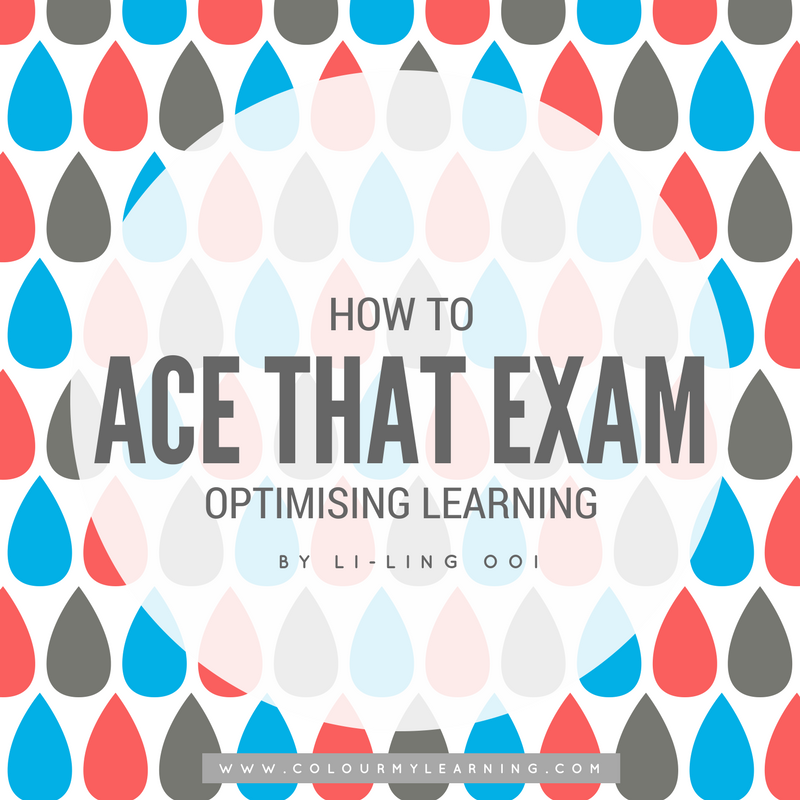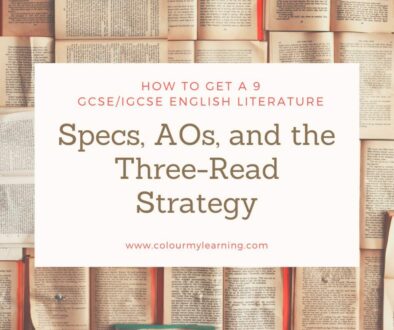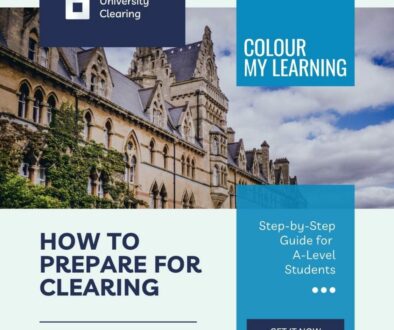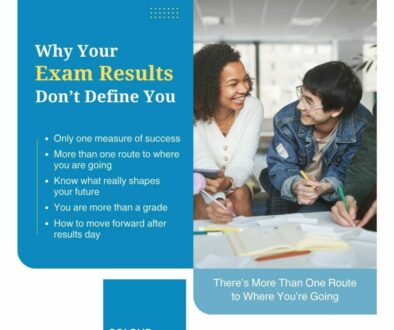How To Ace That Exam: Optimising Learning
Following on the heels of our recent article on Examinations we focus now on something all students should be taught but unfortunately aren’t, that is ‘How to Learn’.
Learning, is without a doubt, a life-long process. The end of our time in school or at any higher educational establishments seems, it does not signify the end of learning, no matter how final a graduation scroll appears to be.
Learning for Pleasure
The secret to good learning though, is always, always, learning for pleasure. The keener the interest one has for a subject, the more natural it will be to retain and recall information on it; and subsequently to analyse, evaluate, interpret and following on from there to amalgamate, merge and re-synthesise learned information in to new ideas.
The natural curiosity that drives learning for the fun of it, because it is one’s passion, because it stirs within a deep sense of curiosity, because ‘why wouldn’t you want to know’ are all the hallmarks of learning for pleasure. It relies on an individuals interest and excitement in a particular subject or area of focus.
The reality is though, we are surrounded by society’s definition of what it takes to be an excellent student and for much of this, is the requirement to excel at examinations.
Learning for Exams
Unlike learning for pleasure which takes on a broad, sometimes meandering approach to the knowledge gained, allowing the learner to decide where and what they want to focus on, learning for exams is focussed on a relatively tight pathway, upon which to base the core knowledge of a subject on. The idea being that once this core knowledge is secure, further inquiry and learning can then take place.
Whether that last fact is true is of course up for debate, what is not questionable is that the system in it’s current incarnation defines a good student as one that manages to excel at exams.

No matter what or where your individual interests may lie, the fact is each stage of further educational qualification celebrates the exam achiever – for those pursuing education in the formal sense, more options are available, more opportunities are available, more pathways are available simply by excelling at the exam.
Now, the interesting thing that arises from this realisation is the fact that students are not actually taught ‘how’ to excel at exams. Teachers teach subject content, many, in their dedication, work towards making the sometimes extremely dry content, palatable, even enjoyable, but very few teachers actually talk about, or even teach the techniques that are required to excel at the one thing that defines the value and success of their teaching – exams.
It may be, that exam techniques were not taught to them and therefore they overlook the importance of actually ‘knowing’ how to do well in exams, or it could be that there is often more syllabus than there is time to complete it well, and therefore the focus is placed on teaching the content first, whatever the reason may be, it is a fact that excelling at exams is actually a skill that can be learnt and perfected with some practise, dedication and discipline.
Step-by-step to Excelling at Exams
Excelling at an exam actually starts significantly before the subject content is even taught. Many of us make the mistake of thinking that reading and re-reading text or working to memorise exam content is the best way to score in an exam. Perhaps it’s based on innate experience of having managed to commit something to memory simply because we have read it many times. Exams however require more than memorising – more than memory work, exams actually require the ability to compartmentalise, recall with precision, and subsequently the ability to present, draw out and yield the relevant material at exactly the right time.
The following stages document how to make it work.
Stage 1 – Preparation is key (Quick process)
This stage begins ideally before the teacher covers the content in class. Ideally a day or two before the teacher is due to teach it – read the chapter or do the content research. This means you read ahead of what your teacher is going to teach in class. This set the scene for what you need to know before even stepping in to the class.
More specifically, do it in this order. Each step has been marked QUICK or FOCUSED to provide a rough estimate of how much time to spend on each. QUICK should only be between 5-10 minutes (of course, dependent on how quick you read, and you can skim read here and how large the topics are that you are working on); FOCUSED means that it should take as much time as necessary to complete.
1-1 Turn to the back (QUICK)
Usually at the back of every chapter in a textbook are a set of questions, typically these questions focus on the important aspects and key points of that chapter.
Before even starting to read through the chapter, reading the questions (even if you have no idea what it is about, or what they mean) give you an idea of the things you need to look out for when you start reading through.
You do not need to attempt to answer the questions, although in some cases you might find that you already know a version or a part of the answer.
Basically, reading through the questions focuses your attention on what you will need to pay attention to as you read through the chapter.
1-2 Note learning aims and objectives (QUICK)
If there are learning aims and objectives at the front of the chapter you are working on, read through them thoroughly.
This is the major mistake that everyone makes, as a student – we assume that the learning aims and objectives are there for the teacher to know what to teach. To a certain extent that is true, but more than that, the learning aims and objectives of each chapter, if they are given, provide a very good outline or skeleton of all the things you need to know from that particular chapter.
Reading through them briefly, after you have read through the questions at the back ensures that you know what to concentrate on.
1-3 Read AND make notes (FOCUSED)
After 5-10 minutes of getting through Steps 1-1 and 1-2, the next stage is to read through the content in the chapter and make brief notes. Ideally start with a skeleton of the structure of the chapter and write brief points for each section. Leave space after each section for further notes from class.
At this point, you should already know which areas you need to focus on, based on the questions and learning objectives you have already read through. Whether you make your notes in List form or as a Mind Map is entirely a personal choice, depending on which works best for you.
Stage 2 – Reinforcing
This next stage of learning is based on reinforcing the knowledge that you have already acquired, no matter how brief, from your initial reading of the learning content. The next steps are crucial for embedding the knowledge.
2-1 Attend class/lecture – (FOCUSED)
Make learning active: pay full attention, ask questions, engage, complete notes.
Class teaching or lectures, leave little room for actual active learning. The challenge for the teacher at the front is always to ensure that they reach as many students as possible within that allowed time frame and unfortunately this often means that they rely on what they believe to be the most efficient way of disseminating information – explaining or even sometimes just reading it out in class.
However, as a student, you can turn this in to a very applied and active way of learning, which is to pay full attention, and given that at this point a lot of the content being taught is already known to you, it allows you to have time to think and analyse the information presented.
It is at this point, that it becomes very useful to pay attention, ask questions (when able) and engage with the content as it is being presented – whether this means that you are ‘completing’ or adding to the notes you made earlier or even writing down possible questions to ask.
Ultimately, your aim at this point is to ‘engage’ in the content; to know it better, make it more relevant to you and where possible, actively commit what you know to memory – whether it is using mnemonics or inventing a story or just making it more interesting for you to learn it. Also read: How to Enhance Your Memory
2-2 Information retrieval – Recall, recall, recall (QUICK)
If the class is taught optimally, the teacher would have emphasised the main point of that class at least three times already, which means by the end of the class you would have interacted with the content about 5 – 6 times.
At this stage, as you are leaving the class or walking down the corridor, it is so easy to start catching up with friends, gossip, making plans for the coming days, all things that students typically do straight after a class. The thing is, straight after class is when your brain is optimally geared for recalling, analysing and thinking about what you have just learnt.
Spending just 5 minutes, whether it’s on your own, or with a group of friends, to very quickly discuss and recall the class content would in fact, contribute significantly to embedding the knowledge.
The key to exam performance lies in timely and accurate information retrieval, and as soon as you can practise it after you learn the content, makes it a very efficient way of preparing for exams.
You really do not have to spend much time at this stage, a quick recall, a bit like a replay of a movie in your head with the main points highlighted would be sufficient.
2-3 Re-read and complete notes (FOCUSED)
Within, ideally 24 hours but up to 48 hours of learning the content, you should then be able to set aside some time to re-read complete and update your notes from that class. Again, if all the earlier steps have been completed sufficiently well, this step should not take long at all.
It is also at this point, that you’ll want to use highlighters or coloured pens to emphasis the sections in your notes. Do not overdo it though. It is very easy and very tempting to go overboard and make graphically appealing notes; the point here however is to highlight and use colour for focus. If you overdo it, when you are revising again, it will actually be more of a distraction than a help.
It is also worth compiling prior exam questions related to this topic, skim read and glance through them. As soon as you can, make some time to attempt the questions related to the topics that you have just studied.
Also read: How to Write Effective and Efficient Learning Notes
Stage 3 – Exam preparation is KEY (FOCUSED)
In building up to this stage of exam preparation, you would have already embedded most if not all of the knowledge and facts required for answering the exam questions.
While it is essential to know the content of the subject of the exam, to perform well in exams is really a matter performance and practise. The best way to do this is to do and re-do as many exam questions you can.
3-1 Self-test – Exam readiness (FOCUSED)
Exam questions by topic
Initially, you may want to attempt the exam questions based on the chapters of study. Be gentle on yourself here and remember that at this stage, the use of actual exam questions are meant to scaffold what you have already learnt.
It should serve as signposts to provide emphasis and focus on the important points and topics that you need to pay attention to. Refer to your notes if necessary, write the optimum answers, and if possible, discuss with your teachers how it would be marked in an examination setting.
Trial exam papers
In the final weeks building up to the exam, you would focus entirely on attempting to answer exam questions in an examination setting. On your own, make sure you work with a timer, and resist the urge to look up answers if you are not sure.
At this point, if your learning process has been effective, you will find the bulk of the exam content very familiar.
When you are ‘marking’ your own paper, it is at this point in time that if you need to, look up and correct any mistakes you have made. If possible, try all exam papers multiple times, noting your weak spots and paying more attention to the areas that you’re unsure of.
3-2 Final review just before exam
The day before the exam, do little more than take a quick glance through your notes and attempted exam questions and pay some attention to the areas, if any, that you still feel unsure of. Relax as best you can and have a good night’s sleep. By now, you will have already done everything you can to learn and prepare for the exam.
Final Words
In any exam paper, if there are surprises that you were not prepared for, move on and focus on the things that you do know well.
Equally, during an exam period, once a paper is complete, don’t dwell on it no matter how well or how badly you think you did and focus instead on the next one.
It is always important to remember that regardless of what society appears to emphasise, exams are not the be all and end all of a great education. Many many things can go wrong and equally many many things can go right. The best thing you can do for an exam is to make sure you prepare as best you can, and on the day, do your very best.










